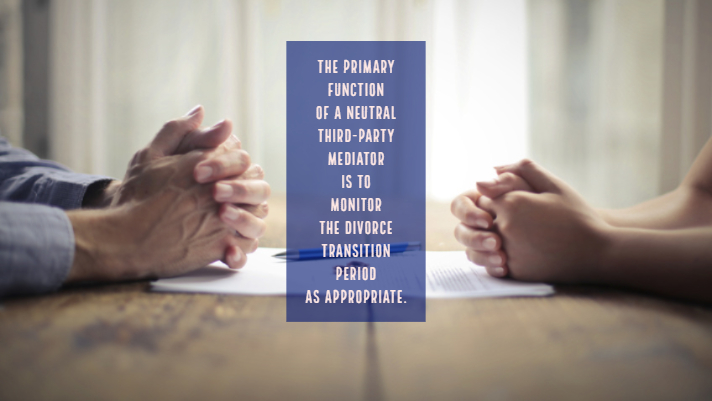Caring and Co-Parenting After Divorce
When you make use of divorce mediation services while divorcing your significant other, this can significantly decr
ease the hardships and challenges that come during and after the process. The collaborative nature of mediation encourages less reliance on an adversarial relationship between the parties than traditionally divorcing your significant other, facilitating more effective communication between parents. While mediation eases some challenges that come with this major life change, individuals nevertheless must contend with hurdles including living independently and increased financial stressors.
Every situation is unique, but common obstacles during the divorce transition phase include: establishing consistency between two separate homes for the child or children when the parties have different parenting styles; adjusting to one or both parents entering into new relationships (Many people re-marry within three years post-divorce so this is key.); dealing constructively with scheduling issues such as parents who tend to run late or miss scheduled visitations; and handling crises like illnesses. Fortunately, there are innovative ways available to make the divorce process as peaceful as possible for all.
Third-Party Assistance. An effective way to help ease this time is selecting a neutral third-party to serve as a go-between or referee when necessary. This may be your mediator, a family member, or a mutual friend. The primary function of the neutral third-party is to monitor the divorce transition period as appropriate, make recommendations and offer help to assist when things get a bit sticky. This “referee” should not be an advocate for either party, but for the children or children involved, and peace-promotion overall.
Having this person available can also help defuse any potential arguments that may arise between divorcing parents whose emotions may be running high, but still must liaise with one another. Keeping arguments to an absolute minimum is always the way forward, both for the parents, and particularly for children.
Depending on what legal authority is granted to them, this facilitator can recommend – or even enforce – bounds around parental visitation time with the child, settle transportation disputes, and keep an eye out for any potential abuses. While this role may be taken on by a mediator or other trained professional, having it filled by someone other than your divorce lawyer may remove any perceptions that they are on one side or another.
Technology. Considering the ubiquity of smartphones and all manner of apps for just about every conceivable use, your smartphone can serve as quite a helpful tool while navigating divorcing your significant other. Perhaps first and foremost is Uber and o
ther ride-sharing services. A common dispute in divorces of the past were issues arising from shuttling the kids from one home or activity to another. Ride-sharing services allow parents to simply order a ride via their ride-sharing app to transport the kids, avoiding direct contact with their former partner at sensitive times and the frustration of having to act as a chauffeur. For younger children, ride-sharing services like Zemcar offer on-demand rides provided by drivers who have gone through enhanced security checks. Even something as simple as having the option to text your former partner helps. Again, this removes the need for direct conversations which may lead to conflict, and it ensures that your communications are in writing
should records of messages be needed in the future.
It is essential to bear in mind that, while it may not feel like it in the moment, the divorce transition phase is temporary.
Kids are resilient.
And so are you.


